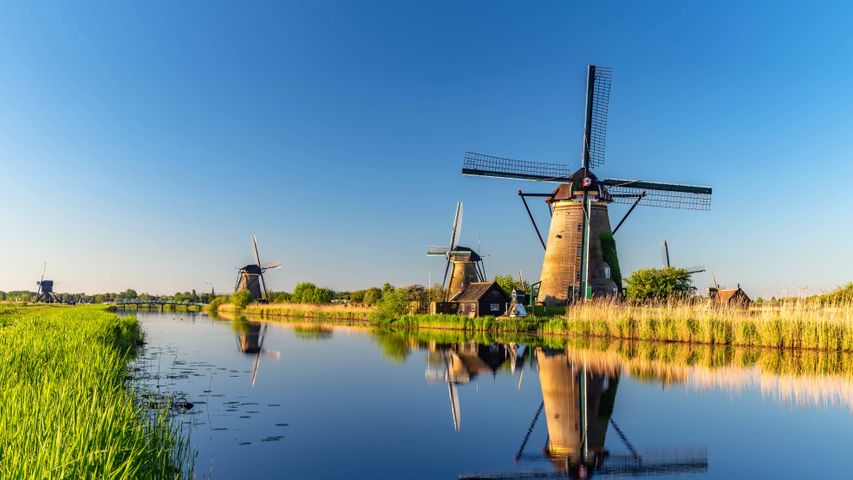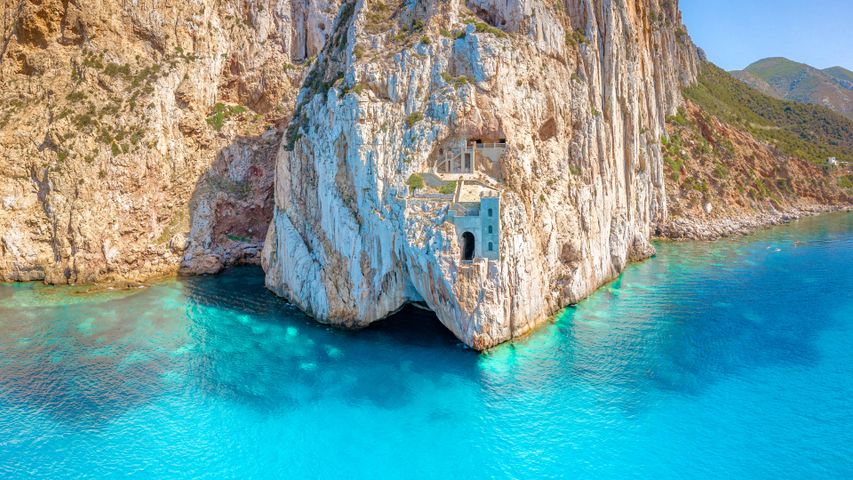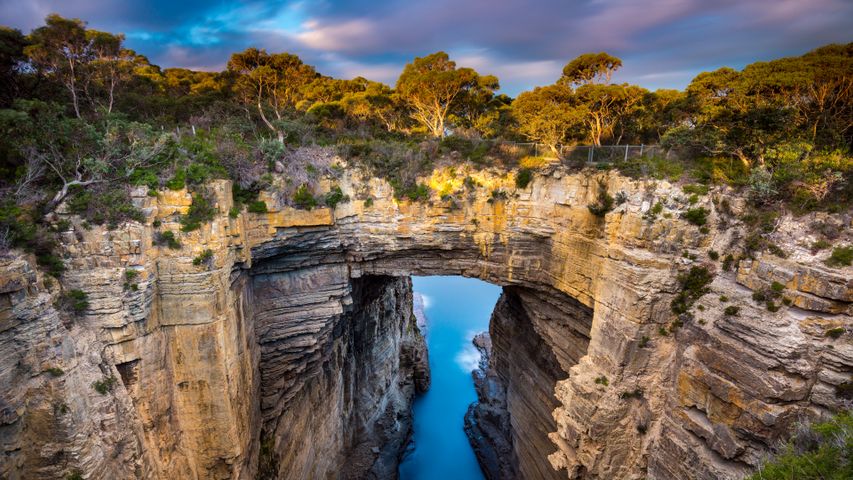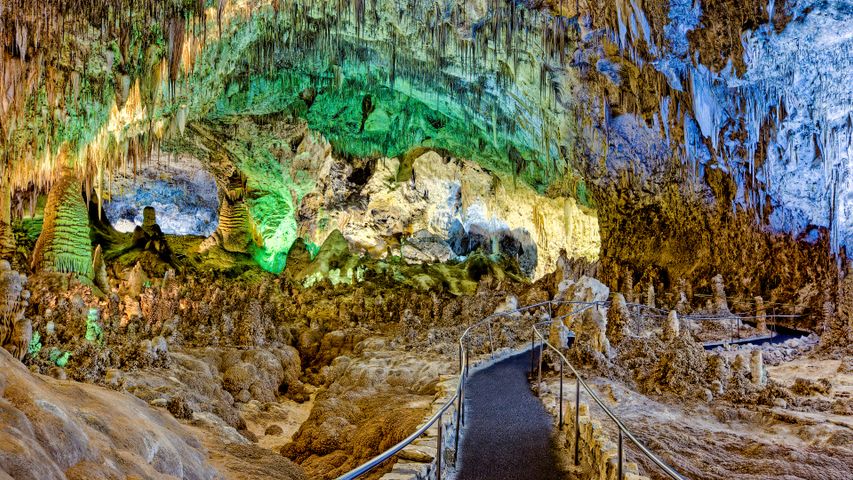Porto Flavia, Sulcis-Iglesiente, Sardinia, Italy
© Marco Bottigelli/Getty Image
Porto Flavia, Sulcis-Iglesiente, Sardinia, Italy
Most ports rely on docks and cranes that extend into the shoreline. Porto Flavia in the Sulcis-Iglesiente region, however, took a completely different approach. This engineering marvel transformed a cliff into a gateway for Sardinia's ore industry. Mining in Sulcis-Iglesiente has a history dating back thousands of years, from the Phoenicians and Romans to the industrial boom in the 20th century. Lead, zinc, coal, sulphur, barium and silver were extracted from these rugged hills, but transporting them was a logistical nightmare. Ore had to be hauled by cart, loaded onto small boats and then transferred to larger ships—a slow, costly and inefficient process.
In 1924, Italian engineer Cesare Vecelli revolutionised ore transport in the region. He designed Porto Flavia as a system of tunnels and silos carved into a limestone cliff, allowing ore to be loaded directly onto cargo ships. The facility featured two stacked tunnel levels. The upper level could store up to 10,000 tones of ore in nine reservoirs. Gravity-fed chutes transported the ore to the lower level, where a conveyor belt loaded it directly onto waiting ships. The port, named after Vecelli's daughter, Flavia, remained in use until mining declined in the mid-20th century. Today, visitors can explore its tunnels, massive silos and the platform where ships once docked—soaking in the same sea breeze that once carried Sardinia's minerals to markets worldwide.
Related Images
Bing Today Images




 The Milky Way framed by Double Arch in Arches National Park, Utah, United States
The Milky Way framed by Double Arch in Arches National Park, Utah, United States
 Kachina Bridge, Natural Bridges National Monument, Utah, United States
Kachina Bridge, Natural Bridges National Monument, Utah, United States
 Desert bighorn sheep in Valley of Fire State Park, Nevada, United States
Desert bighorn sheep in Valley of Fire State Park, Nevada, United States
 Icicles of Misotsuchi, Chichibu, Japan
Icicles of Misotsuchi, Chichibu, Japan
 Ad-Deir, Petra, Jordan
Ad-Deir, Petra, Jordan
 Neptune's Grotto, Sardinia, Italy
Neptune's Grotto, Sardinia, Italy
 Tasmans Arch, Tasmania, Australia
Tasmans Arch, Tasmania, Australia
 Double Arch seen through Cove Arch, Arches National Park, Utah, USA
Double Arch seen through Cove Arch, Arches National Park, Utah, USA


